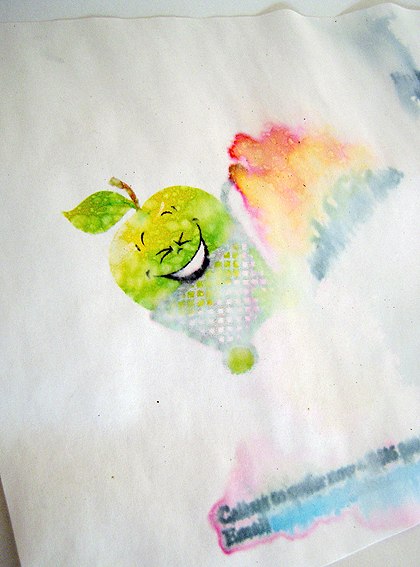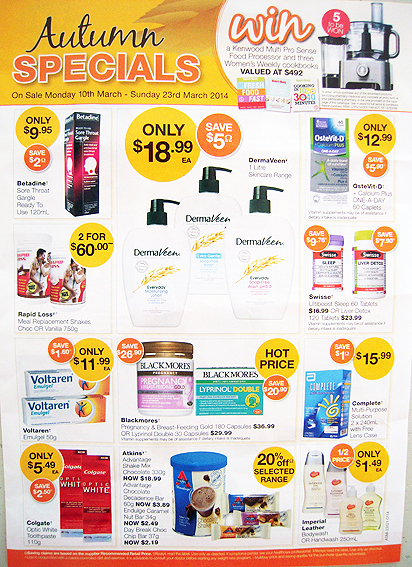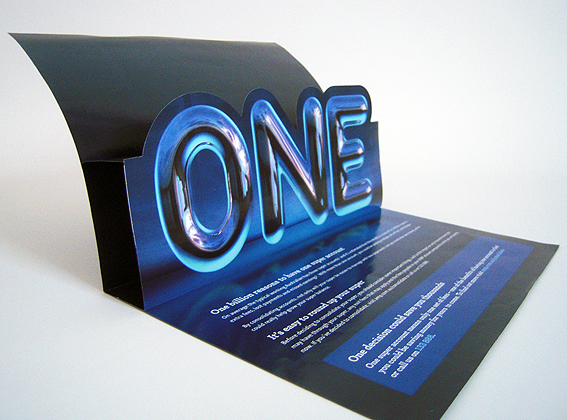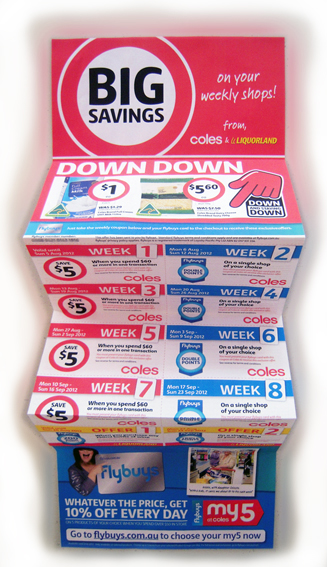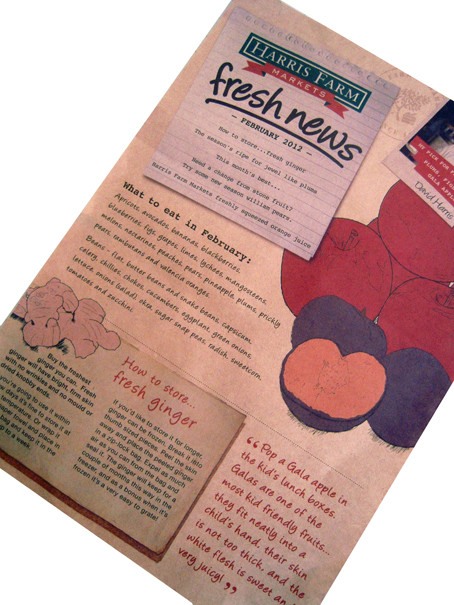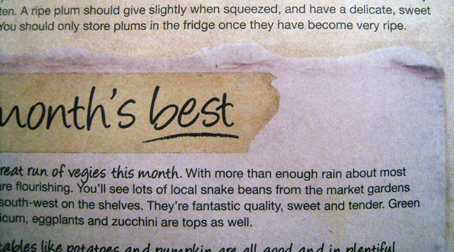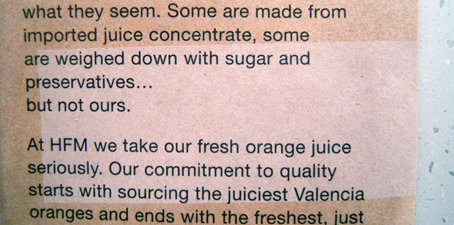A spell of wet weather can be disastrous for an ill-timed letterbox drop campaign, as can be seen by this grocer’s flyer which arrived just in time for a sudden downpour.
Being safely cocooned inside the mailbox is no guarantee of making it to the recipient in good condition. This one was tucked away inside the box but still received a soaking which resulted in some rather weird things happening to the ink. Ummmm… runny.
Not that the cheery apple in the shopping cart here seems to mind all that much, although I doubt the advertiser was quite so pleased given that any contact details were blurred practically beyond comprehension.
This is the downside of print ‘n’ paper being tactile and organic and real and natural and all those lovely positive things that those nasty dead, cold, alien digital media channels are not. As a medium, print tends to respond to whatever environment it finds itself in – and if that’s a soggy one, well, the effects can be beautiful but rather unhelpful. Fire can also be awkward. Direct light, too, may cause fading in the long run while wind has a habit of redistributing printed matter according to its own particular whims.
In fact just about any interaction with the physical world will have an effect on print, which is why it’s better just to lock it away in a dark place where no-one can see it.
Equally though, there are times when the resilience of paper in the face of adverse weather conditions can be completely unexpected.
Perhaps it is this unpredictable and contrary nature of paper – fragile yet durable, disposable yet also archival – which makes it so beguiling to collectors and other papyrophiles.

